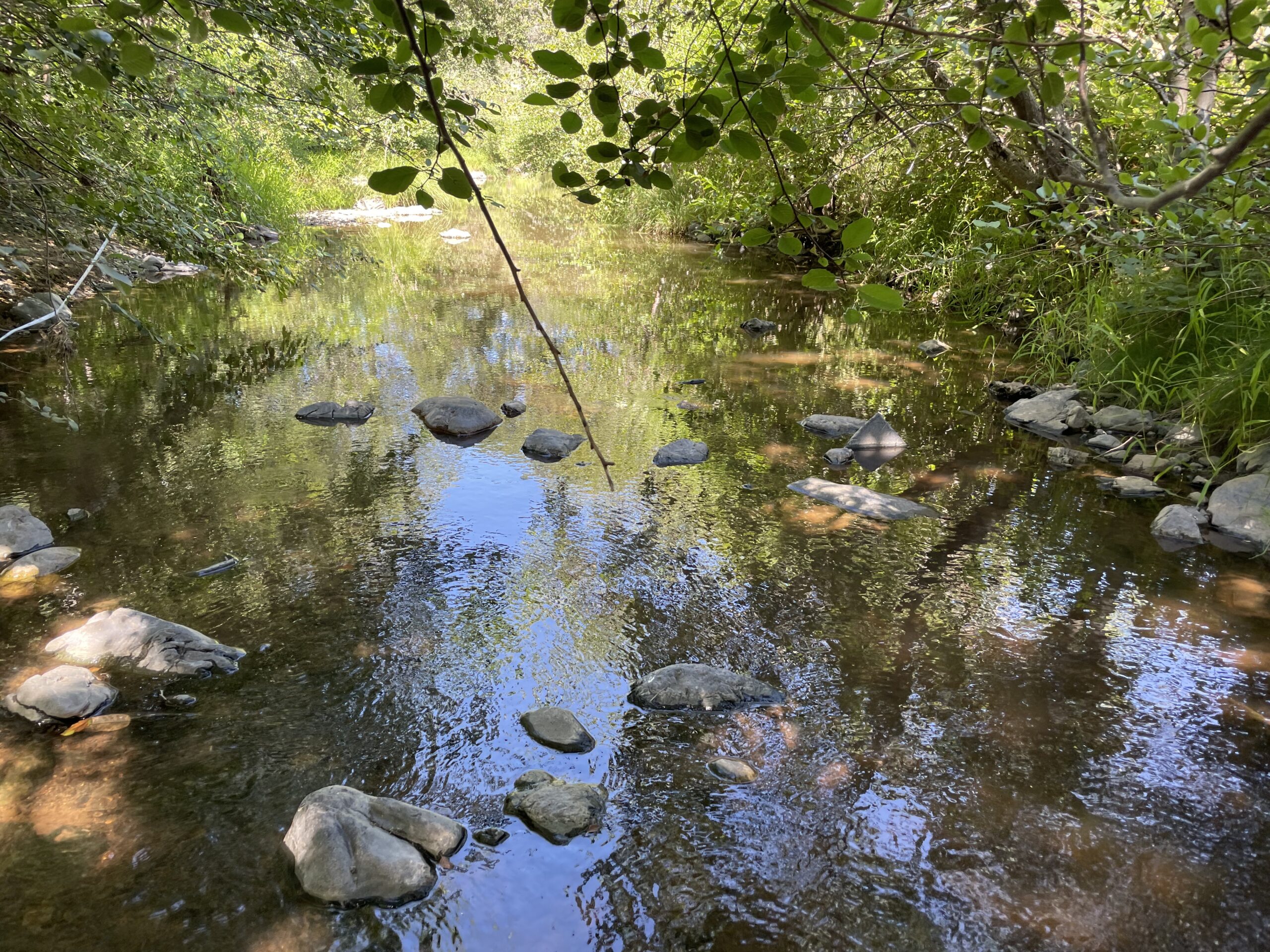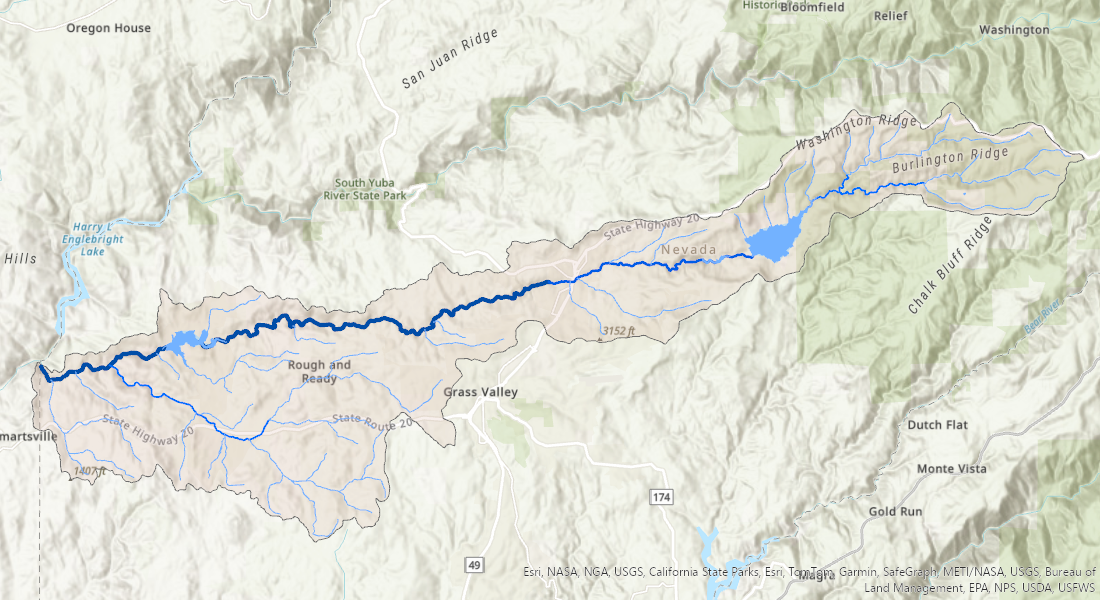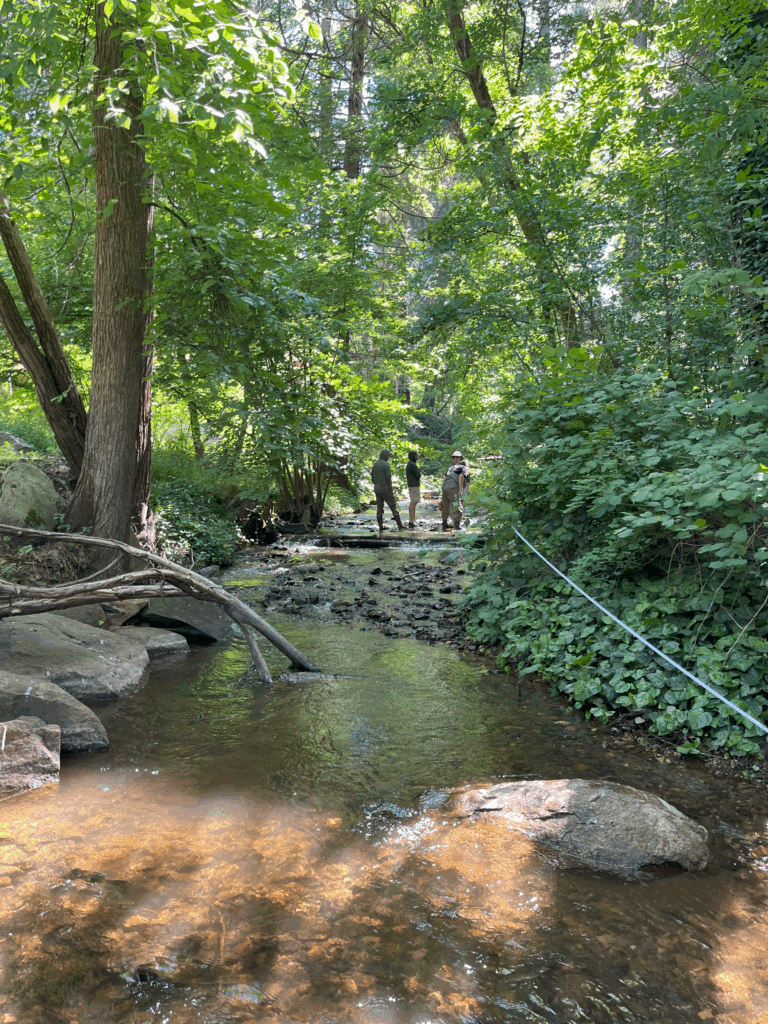Welcome back to Meet the SSI Monitoring Sites. In the third iteration of this series, we’ll look at a few sites in tandem. While each of these locations has its own unique characteristics, they share one thing in common – Meet the tributaries of Deer Creek!


A tributary is a stream that feeds into a larger stream, often referred to as the “main stem” in a watershed. While tributaries are smaller than the main stem creek they feed into, they are important representatives of what is happening in the watershed at large. By monitoring Deer Creek as well as a few choice tributaries, SSI can better identify where changes in water quality come from.
Sierra Streams Institute monitors two tributaries in the Deer Creek watershed – Little Deer Creek and Squirrel Creek. SSI monitors water quality quarterly and performs in-depth creek surveys annually at both sites.



Little Deer Creek starts in the upper elevations of Nevada City and flows through Pioneer Park then connects to Deer Creek in downtown Nevada City below the Nevada St. Bridge. Little Deer Creek can experience a dramatic change in water quality as it flows through Pioneer Park. SSI has observed large spikes in bacterial concentrations in the creek from above to below the Park, especially during storms or late summer when flows are low. Through careful study, SSI determined that the number one source of this bacteria is the dog park next to the creek in Pioneer Park.
During storms, dog waste that hasn’t been picked up can flush into the creek resulting in spikes of bacterial concentrations. On the contrary, during late summer flows are low and temperatures are warm, which creates the perfect concentrated playground for bacteria. SSI closely monitors this site during in the late summer to report exceedances to Nevada City and keep residents safe from contaminated water. You can read more about SSI’s bacteria monitoring work in Little Deer Creek here!


Squirrel Creek flows through Penn Valley and connects to Deer Creek below Lake Wildwood. As Squirrel Creek flows through Penn Valley, SSI water quality monitoring has captured high nutrient and bacteria levels which were traced to septic leaks. Closer to its confluence (meeting point) with Deer Creek, Squirrel Creek can experience very low flows and high water temperatures before it joins with Deer Creek. Keeping an eye on this area is important for the health of organisms in Squirrel Creek and to understand the downstream impacts that these warm waters can have for organisms like salmon which spawn at the bottom of Deer Creek.
By monitoring these two tributaries of Deer Creek, SSI has captured important trends in bacteria and nutrients which were traceable back to specific events or locations in the watershed. This highlights the importance of monitoring our waterways in the context of their whole watershed!
If you’re interested in doing your part to help SSI monitor tributaries like these, check out our Volunteer and Intern pages for opportunities to get involved.

